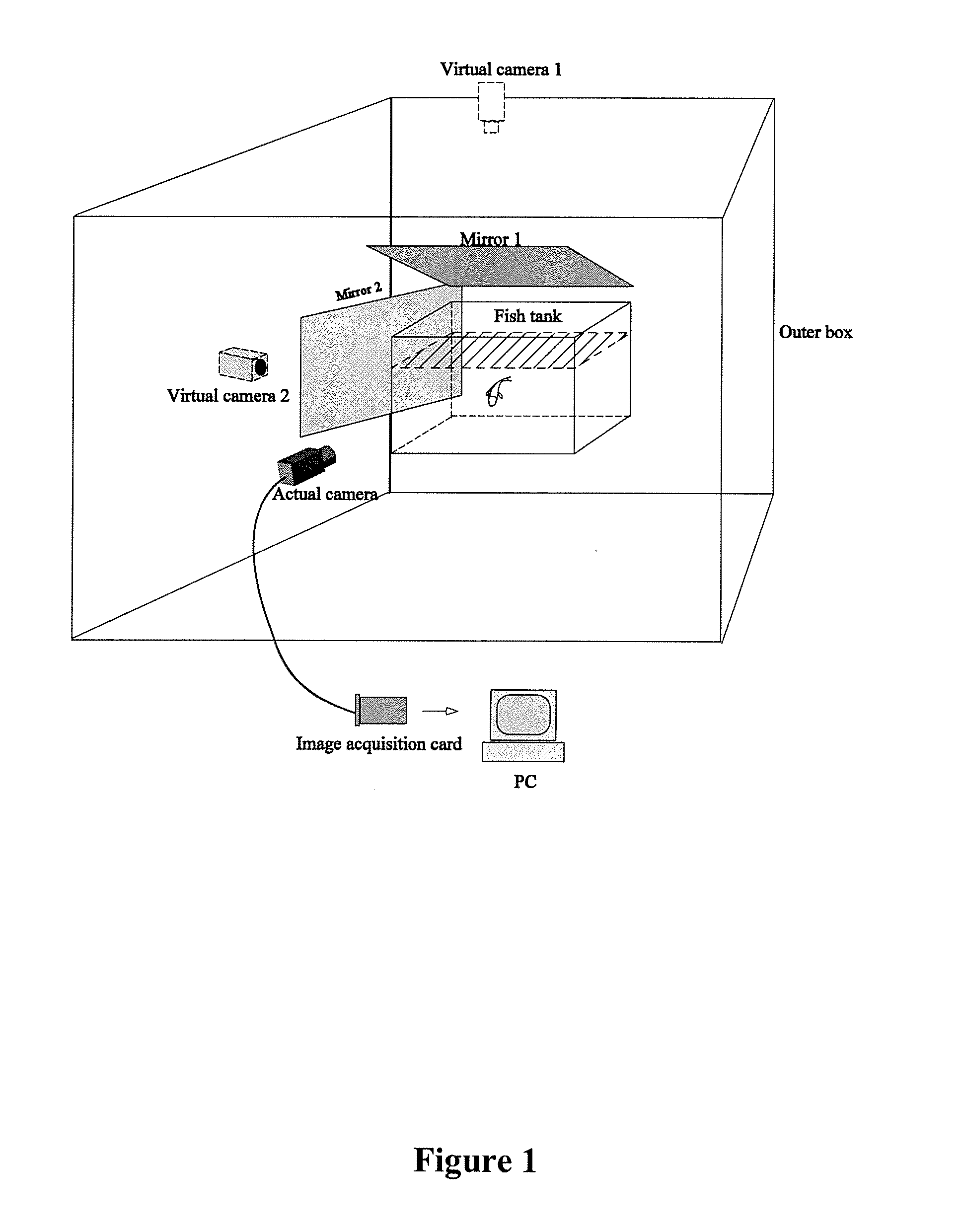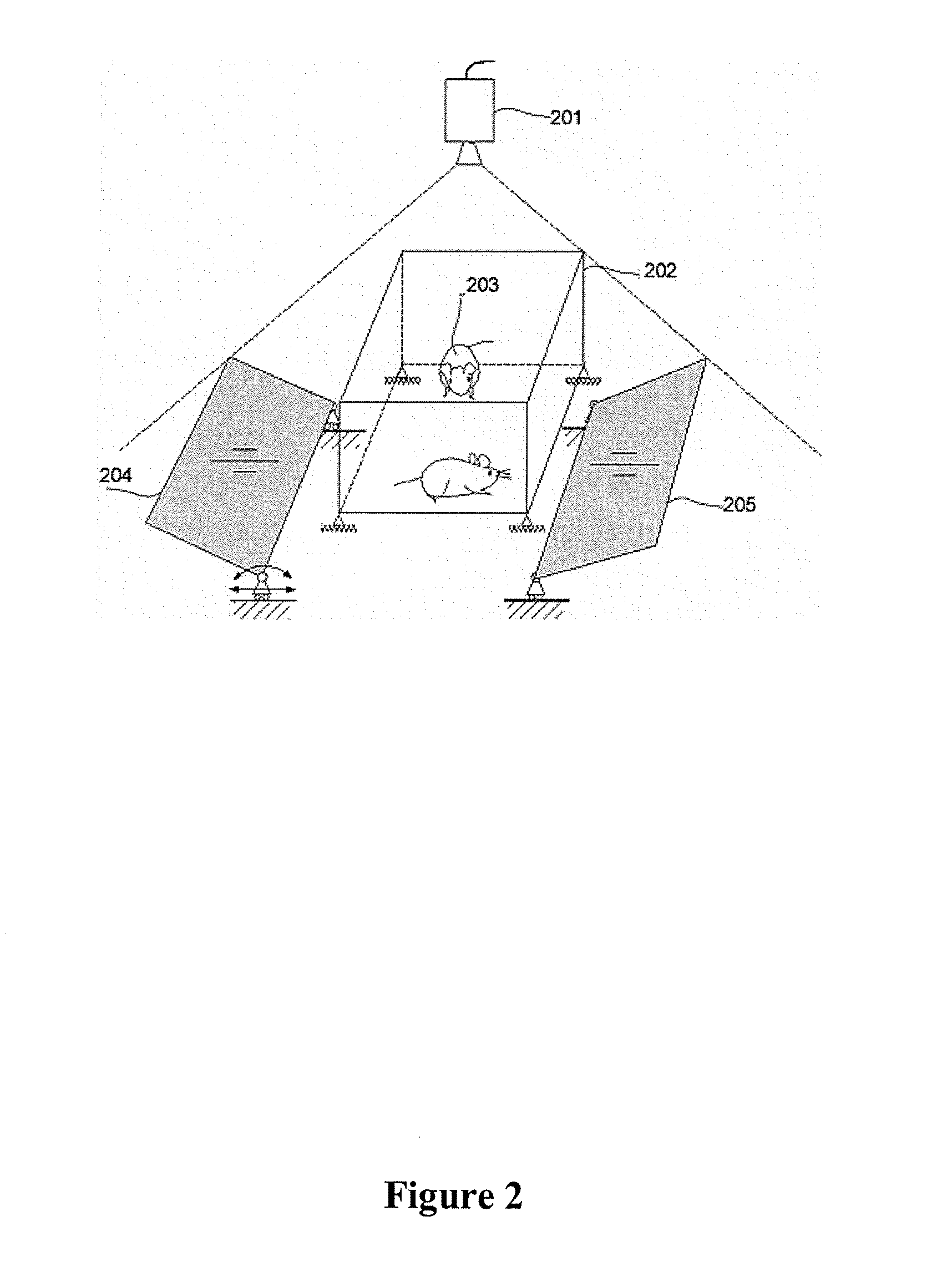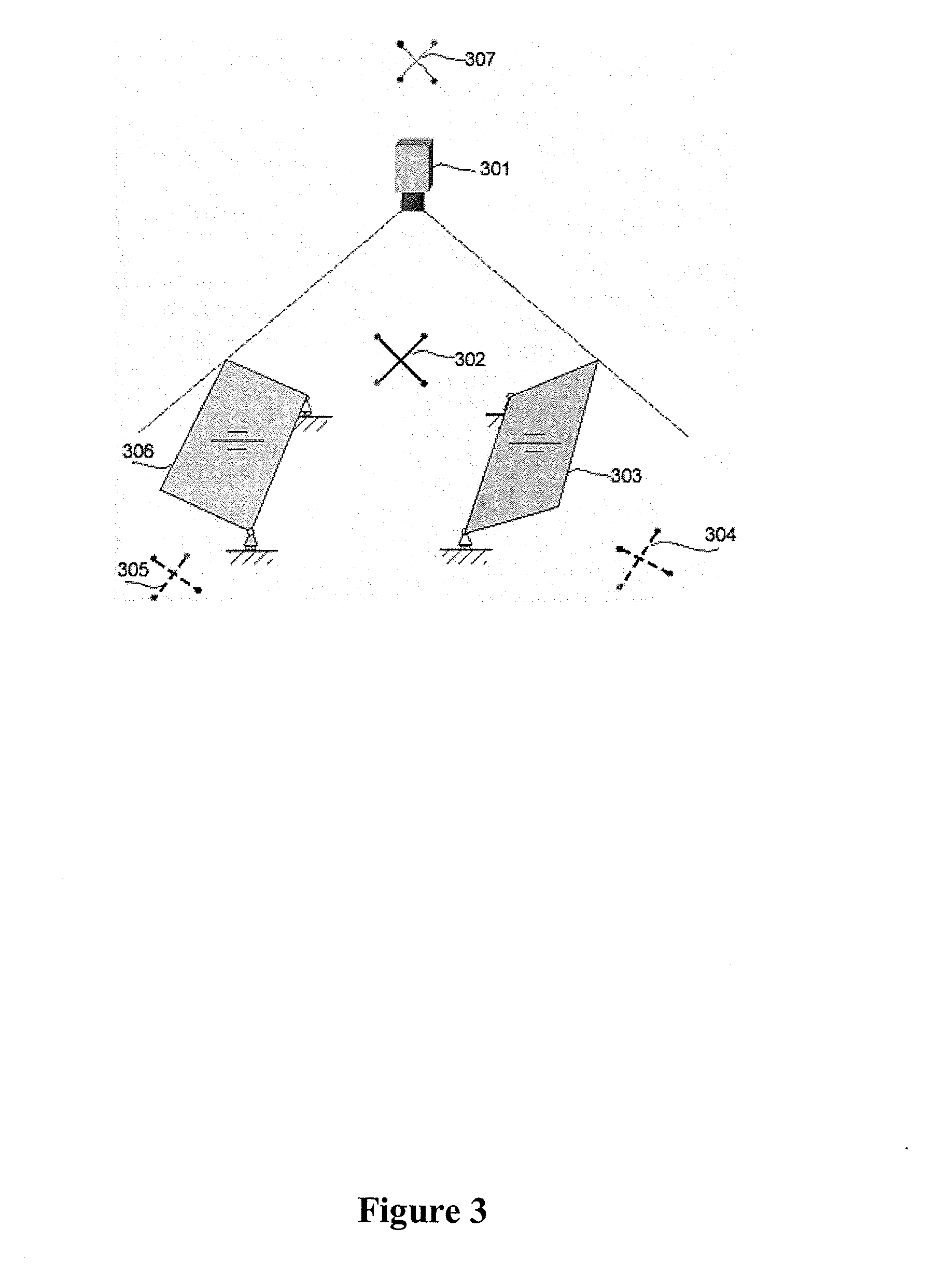System For 3D Monitoring And Analysis Of Motion Behavior Of Targets
- Summary
- Abstract
- Description
- Claims
- Application Information
AI Technical Summary
Problems solved by technology
Method used
Image
Examples
example 1
Monitoring the Change in 3-D Swimming Locomotion of Goldfish (Carassius auratus) Induced by Adding Ethanol in Water
[0138]Change in fish locomotion responses to various chemical compounds are monitored, quantified and analyzed by the system and methods of the invention. For instance, one of such experiments is the alcohol addiction response of goldfish. In this exemplary behavior monitoring experiment, goldfish (Carassius Auratus) of average body length 35˜40 mm with identical biological conditions were screened and raised for alcohol response. The goldfish were then divided into 5 groups, as shown in Table 3. The fish to be tested were kept in identical and natural environment for several days. Before the monitoring process, they were taken out and habituated for one hour in the tanks with the specified alcohol concentration values. Each monitoring process lasted for 15 minutes. To exclude any transient response induced by a novel environment, the fish trajectories in the last 5 min...
example 2
Rating Ethanol-Induced Intoxication by Monitoring the Change in 3-d Motion of Mouse Head
[0142]In this example, the invented 3-D behavior monitoring system is applied to quantitatively identify detailed differences in mouse locomotion caused by ethanol injection-induced intoxication. The focus of the associated experiments was to discover the details in behavior change that are totally objective yet hard to detect by human observations or 2-D monitoring systems.
[0143]Female ICR mice 21-25 grams were obtained from Charles River Laboratory. These mice were housed in lab animal facility for at least one week before the behavioral experiments. All mice were housed in standard mouse cages with food and water provided ad libitum. They were maintained with a 12:12-h-light-dark cycle with lights on at 9:00AM daily.
[0144]With pilot studies with genetically homogeneous mice and arithmetic rating scales, alcohol dosage were determined to be 0, 0. 1, 0.2, 0.5, 1.0 and 2.0 g / kg for the behavioral...
PUM
 Login to View More
Login to View More Abstract
Description
Claims
Application Information
 Login to View More
Login to View More - R&D
- Intellectual Property
- Life Sciences
- Materials
- Tech Scout
- Unparalleled Data Quality
- Higher Quality Content
- 60% Fewer Hallucinations
Browse by: Latest US Patents, China's latest patents, Technical Efficacy Thesaurus, Application Domain, Technology Topic, Popular Technical Reports.
© 2025 PatSnap. All rights reserved.Legal|Privacy policy|Modern Slavery Act Transparency Statement|Sitemap|About US| Contact US: help@patsnap.com



